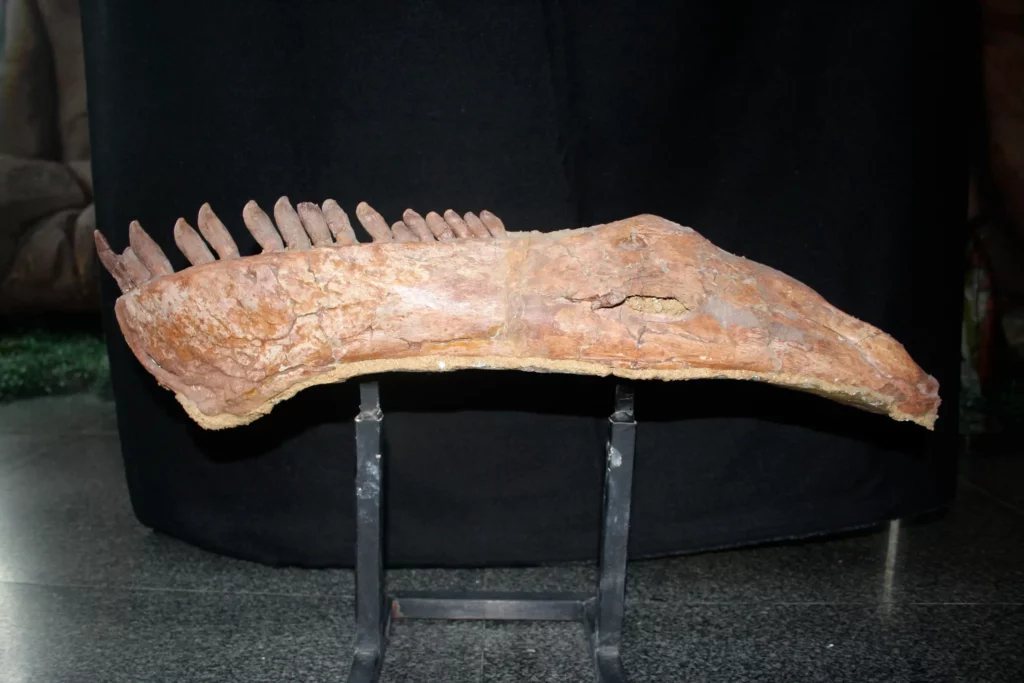No matter our age, we all want to be the best versions of ourselves. To achieve this goal, it’s important to focus on improving our physical health, mental strength and emotional well-being. Eating nutritious foods, exercising regularly and getting enough sleep are key components of having good physical health. Finding activities that allow us to express ourselves creatively and showing compassion to others can enhance our mental and emotional health. When we take care of these three aspects in life, we can feel more balanced and fulfilled.
A group of scientists has discovered that the Mamenchisaurus sinocanadorum, a dinosaur from China which lived around 174–114 million years ago, had an incredibly long neck – measuring up to 50 feet! The team was led by paleontologist Dr. Andrew J. Moore from Stony Brook University and included Professor Paul Barret from the Natural History Museum in London. They wanted to learn more about the Mamenchisauridae family, a group of dinosaurs with very long necks who roamed East Asia millions of years ago. This discovery really reveals how fascinating these giants were back then!
Sauropod dinosaurs have been popular since the 1800s when the first complete fossils were found in the United States. The fossil that was used to cast Dippy from the Natural History Museum was one of these discoveries.
A group of scientists that includes Dr. Andrew J. Moore from Stony Brook University and Professor Paul Barret from the Natural History Museum in London recently discovered a strange dinosaur called Mamenchisaurus sinocanadorum. This kind of dinosaur had an incredibly long neck – which was about 50 feet (or 15 meters) long!

Scientists recently found out something interesting about the Mamenchisauridae family, which are a group of dinosaurs with extremely long necks. These kinds of dinosaurs existed in East Asia and maybe other places from 174 to 114 million years ago.
Mamenchisaurus sinocanadorum was discovered in China in 1987. Its neck is really long, measuring about 15.1 meters or over 6 times longer than a giraffe’s neck! That makes it the longest of any animal that has ever been discovered. It’s so long that it’s 1.5 times as long as an entire double-decker bus!
Sauropods had long necks which allowed them to eat food without having to move around a lot. Just by standing in one spot, they could quickly get lots of food. Also, the long neck helped them stay cool because it increased their surface area just like an elephant’s huge ears do. This method of eating was so successful that sauropods lived from the dinosaur’s early evolution until an asteroid killed them off in the Mesozoic era, apart from its relatives – modern birds.
It’s difficult to understand which sauropod had the longest neck. This is because it’s tough to bury such a huge animal in the ground and turn them into fossils, the beginning of discovering more information about them. In addition, fossils often lack many details that would help us estimate their neck length correctly.
Scientists looked at a few neck and skull bones of Mamenchisaurus sinocanadorum to figure out how it is related to other dinosaurs, and extrapolated that it must have had the longest neck ever discovered! The neck was around 15.1 meters long, which is much longer than any other similar dinos found before.
Dr. Andrew J. Moore from Stony Brook University said that even though all sauropods are big-bodied dinosaurs, some of them had super-long necks. These dinosaurs were called Mamenchisaurids, and one of the longest known was the Mamenchisaurus sinocanadorum with a neck length of 15 meters! That might be the longest neck we know about so far, until more is discovered!
Scientists have been puzzled since ever discovering the long necks and big bodies of sauropods. When looking at a Mamenchisaurus, they used special imaging machines to see that the vertebrae had air pockets that made up 69-77% of their body volume, just like lightweight birds. Unfortunately, this made them more likely to be hurt which is why they had super long neck ribs that were 4 meters in length on either side of the neck. The bundles made with these ribs strengthened the Mamenchisaurus’ neck making it much more stable.
We still don’t quite know how the Mamenchisaurus and other long-necked dinosaurs were able to get air down their necks and into their lungs.
Professor Paul Barrett from the Natural History Museum London said that all sauropod dinosaurs like “Mamenchisaurus” had a special way of breathing. It wasn’t only done by their lungs, but even more air sacs were connected to the lungs and throat. These air sacs were located inside the neck, chest and belly of the dinosaur.
The air sacs of the sauropods were much bigger than the lungs and filled the inside of their bones. This gave them a lot more room to move around all of the air in their long neck.
Mamenchisaurus sinocanadorum has the longest neck of any dinosaur, but it’s not the biggest! This summer, you can see Patagotitan mayorum at London’s Natural History Museum. It’s one of the largest creatures to have ever lived on our planet.
A scientific article was published in the Journal of Systematic Palaeontology on March 15, 2023 by a team of researchers. The article was about Mamenchisaurus sinocanadorum, which is an ancient dinosaur from the late Jurassic period with an exceptionally long neck. It talks about the research done and evolution of these dinosaurs.
A new paper called “Re-assessment of the Late Jurassic eusauropod Mamenchisaurus sinocanadorum Russell and Zheng, 1993, and the evolution of exceptionally long necks in mamenchisaurids” has been published in a magazine called “Journal of Systematic Palaeontology”. This research was made possible thanks to the funding provided by organisations such as the National Science Foundation in United States, The Royal Society of London, and National Natural Science Foundation of China.


